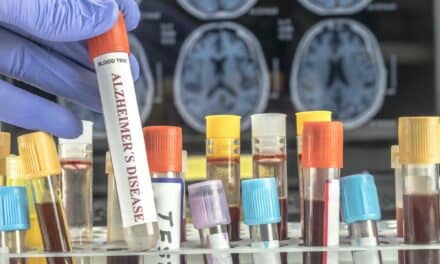Blood levels of a biomarker called glial fibrillary acidic protein (GFAP) may uniquely aid prediction of dementia risk in Mexican Americans, researchers have reported.
A team, comprised of the University of Texas Health Science Center at San Antonio (UT Health San Antonio) and collaborating institutions, scrutinized conversion to dementia over an average four years of follow-up in 745 Mexican Americans participating in the Texas Alzheimer’s Research and Care Consortium (TARCC) study.
The research is described in Alzheimer’s & Dementia: Diagnosis, Assessment & Disease Monitoring, a journal of the Alzheimer’s Association.
“Establishing blood-based biomarkers for Alzheimer’s disease would be tremendous in terms of improving early detection and monitoring of disease severity,” says first author Mitzi M. Gonzales, PhD, assistant professor of neurology in the health science center’s Glenn Biggs Institute for Alzheimer’s and Neurodegenerative Diseases.
The team examined six different biomarkers to see which biomarker or combination of biomarkers would be most predictive of incident dementia.
“The unique thing about this study is that we were able to conduct these analyses in a large sample size of Mexican Americans,” Gonzales says. “This is important because other studies have shown that there are differences in some biomarker values between non-Hispanic whites and other ethnic and racial groups. Lack of biomarker research in diverse cohorts may contribute to disparities in diagnosis and treatment.”
The biomarkers reflect several disease processes, including neuron injury, tau protein accumulation and neuroinflammation. Incident disease in epidemiology refers to changes in health status—such as development of dementia—that occur over a specific period.
Of the blood biomarkers examined, GFAP alone predicted incident dementia, Gonzales says. Adding other biomarkers did not increase its predictive power.
“GFAP alone, or maybe in combination with other biomarkers that we haven’t yet examined, might help us determine who is at elevated risk of developing dementia,” Gonzales says. “More validation studies need to be done before this biomarker can be used as a test in the clinic.”
The TARCC-based research analyzed outcomes of people who at the beginning of the study were either cognitively normal or had mild cognitive impairment.
“Looking over a period of four years, we were able to see that higher levels of this biomarker predicted increased risk,” says Sudha Seshadri, MD, senior author of the research article and founding director of the Glenn Biggs Institute at UT Health San Antonio. “These are people who may not yet have any symptoms, any concerns. Dementia research has made a transition from just treatment alone to treatment and prevention, and there is a lot of excitement about the possibility of being able to prevent dementia in the future by treating it very early.”
Gonzales praised the state of Texas for supporting research of Alzheimer’s disease and related dementias.
TARCC is a consortium of 10 academic centers statewide. Funded by Texas beginning in 1999, it provides researchers with access to more than 10 years of longitudinal data of consortium study participants.
“It is an incredible resource for researchers across the world who have interest in better understanding Alzheimer’s disease and related dementias,” Gonzales says. “The TARCC study is unique in its strong representation of individuals of diverse backgrounds, which is necessary for extending the benefits of research to all groups of people.”
Co-authors on the study published March 24 are from multiple institutions, including The University of Texas Rio Grande Valley (UTRGV) School of Medicine. UTRGV and UT Health San Antonio are partners in one of the nation’s newest Alzheimer’s Disease Research Centers (ADRCs) designated by the National Institute on Aging. The South Texas ADRC is the only one in Texas currently.





